The intake of vitamin A, C, E, D and carotenoids (α-carotene, β-carotene, criptoxanina, lutein, lycopene and), can reduce risk of developing melanoma for their photoprotective and antioxidant properties. In addition, carotenoids provide a protective shield against UV radiation.
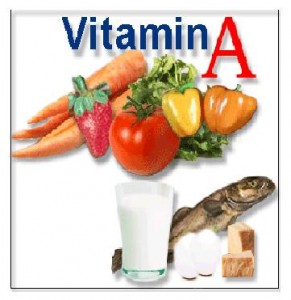
Vitamin A receptors are found in human melanoma cells so that they could prevent proliferation of melanoma cells. Foods like carrots, mangos and sweet potatoes are high in carotenoids. The beneficial effects of beta-carotene to the skin are indicated by studies that have linked the consumption of beta-carotene with reactions to sunburn. A recent study showed that mice with melanoma developed metastases with more difficulty if fed with a diet supplemented with beta-carotene. To take a large amount of beta-carotene is necessary to drink fresh carrot juice. When you drink fruit juices, sometimes you can add a beet, celery sticks, a few leaves of cabbage and broccoli
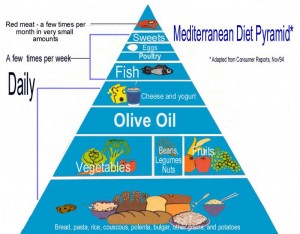
Italian researchers found that the Mediterranean diet protects people from skin cancer (C Fortes, S Mastroeni, F Melchi, MA Pilla, G Antonelli, D Camaioni, M and P Pasquini Alotto : A protective effect of the Mediterranean diet for cutaneous melanoma: International Journal of Epidemiology 2008 37 (5) :1018-1029) These researchers found that Omega 3 rich foods are associated with a lower risk of developing melanoma
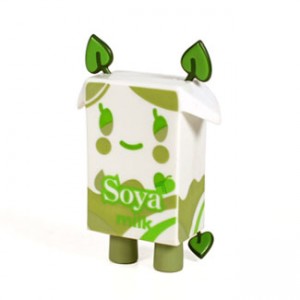
Soybeans contain a variety of phytochemicals (or phytoestrogens), that have been proven to have a profound effect on human health. In a study on mice, adding soy protein to the diet dramatically reduced the extent of melanoma metastasis. Mice were injected with melanoma cells and some were fed a diet high in soy protein while others received regular food. After a period of time on this diet, it was discovered that 80 percent of the standard diet control mice had more than ten distinct areas of melanoma growing in their lungs, while only 22 percent of the soy fed mice contained more than ten metastases. soy milk are good sources of isoflavones
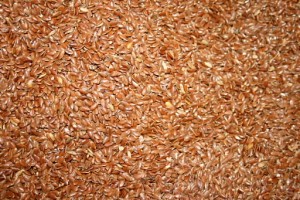
Flax Seeds are a good source of lignans that are phytoestrogens with properties against cancer. Lignans are present in many plants, but its concentration is realy high in flax seeds.
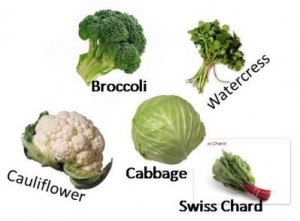
Diets high in cruciferous vegetables (broccoli, brussel sprouts, cabbage, cauliflower, kale, mustard and water cress) are associated with lower risk of cancer of the stomach, colorectal, breast, lung, prostate, bladder. Several studies have suggested that cruciferous vegetables regulate a complex enzymes system that helps against cancer. food rich with isothiocyanates could stop cell growth and even kill melanoma cells in laboratory cultures.
Fruit may contain phytochemicals such as flavonoids (anthocyanins). They are antioxidants and can neutralize free radicals (molecules that can damage DNA and cause cancer). Wild blueberries contain the highest levels of anthocyanins. One study showed that isoprenoids can suppress the proliferation of melanoma cells in mice. To improve the intake of phytoestrogens, you can drink soy milk smoothie and add a few tablespoons of flaxseed to the mix.
Green tea is a drink made from the steamed and dried leaves of the Camellia sinesis plant it contains about 40% polyphenols which can prevent cancer. Researchers think that polyphenols can stop cancer cells from growing, it could lower the risk of prostate and breast cancer. Manufacturers often suggest taking between 3 and 5 cups a day could have benefits. Green tea can cause side effects like difficulty sleeping (caffeine), irritabilità, anxiety.
The melaleuca alternifolia is the scientific name for the Tea Tree has in vitro anti-tumor activities also exhibited strong cytotoxicity towards human lung cancer cell line (A549), human breast cancer cell line (MCF-7) and human prostate cancer cell line (PC-3). The IC50 values obtained were 0.012% (v/v), 0.031% (v/v) and 0.037% (v/v), respectively. Flow cytometric analysis demonstrated that TTO restrained the cell cycle progression of PC-3 and MCF-7 cell lines at the G0/G1 phase and A549 cell at the S phase (Antimicrobial activity and cytotoxicity towards cancer cells of Melaleuca alternifolia (tea tree) oil: Xia Liu, Yuangang Zu, Yujie Fu, Liping Yao, Chengbo Gu, Wei Wang and Thomas Efferth: EUROPEAN FOOD RESEARCH AND TECHNOLOGY: Volume 229, Number 2, 247-253,). At the University of Western Australia guinea pigs with skin cancers have been fed with an oil derived from the plant and the results were a lower cell growth with the gradual regression of cancer.
The whole grains of cereals are rich in antioxidants and phytoestrogens, they are the unrefined products of various cereal plants including wheat, oats, rye, corn, rice, millet, sorghum and barley. Studies have shown diet rich in whole grains are protective against cancer, in addition, the beta-glucan that is found in whole grains such as barley and oats may play a role in improving the immune response by stimulating macrophages to attack tumor cells. One study showed that treatment with beta-glucan increases survival of mice with metastatic liver disease. Unfortunately, many of the grains we get in our diet are highly processed and the levels of antioxidants and phytoestrogens are reduced .
It is believed that vitamin E give protection against cancer. Walnuts contain high concentrations of this vitamin; in addition, the compounds found in black walnut, such as ellagic acid and ejuglone have been shown to reduce the rate of tumor growth in mice. Almonds contain phenolic compounds that act as antioxidants.
Food favoring melanoma
Some studies have found that linoleic acid and alcohol intake could favor the occurrence of a melanoma, although the exact mechanism is not yet understood.
Williams has suggested that alcohol may induce the production of pituitary melanocyte-stimulating hormone so that it could stimulate melanocytic mitoses, other studies have considered that alcohol could cause damage to DNA or DNA methylation or reduce the absorption of substances that can protect from melanoma. It seems that the level that favors the development of melanoma is about 3 kg per year. Study present in the record JAMA implies that folic acid and also vitamins-B12 nutritional supplements would augment the likelihood of melanoma formation.
Bibliography
Bain C, Green A, Siskind V, Alexander J, Harvey P. Diet and melanoma. An exploratory case-control study. Ann Epidemiol 1993;3:235-8
Feskanich D, Willett WC, Hunter DJ, Colditz GA. Dietary intakes of vitamins A, C, and E and risk of melanoma in two cohorts of women. Br J Cancer 2003;88:1381-7
Kirkpatrick CS, White E, Lee JA. Case-control study of malignant melanoma in Washington State. II. Diet, alcohol, and obesity. Am J Epidemiol 1994;139:869-80
L.L. Marchand, B. Saltzman, J.H. Hanki, L.R. Wilkens, A.A. Franke, SJ. Morris, L. Kolonel: Sun Exposure, Diet, and Melanoma in Hawaii Caucasians: Journal of Epidemiology 2006 164(3):232-245
Stryker WS, Stampfer MJ, Stein EA, et al. Diet, plasma levels of β-carotene and α-tocopherol, and risk of malignant melanoma. Am J Epidemiol 1990;131:597-611
Veierod MB, Thelle DS, Laake P. Diet and risk of cutaneous malignant melanoma: a prospective study of 50,757 Norwegian men and women. Int J Cancer1997;71:600-4